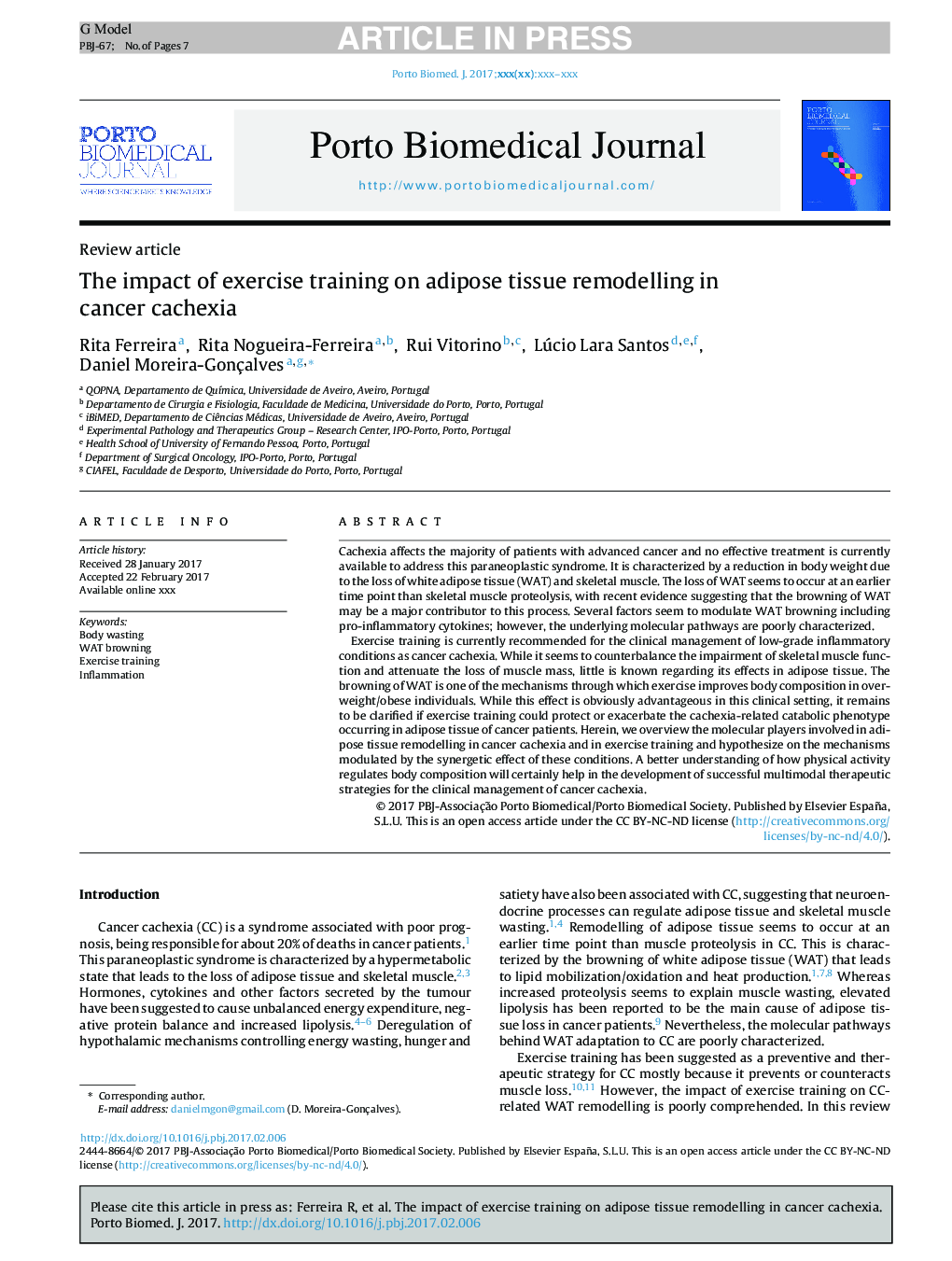| Article ID | Journal | Published Year | Pages | File Type |
|---|---|---|---|---|
| 8765770 | Porto Biomedical Journal | 2017 | 7 Pages |
Abstract
Exercise training is currently recommended for the clinical management of low-grade inflammatory conditions as cancer cachexia. While it seems to counterbalance the impairment of skeletal muscle function and attenuate the loss of muscle mass, little is known regarding its effects in adipose tissue. The browning of WAT is one of the mechanisms through which exercise improves body composition in overweight/obese individuals. While this effect is obviously advantageous in this clinical setting, it remains to be clarified if exercise training could protect or exacerbate the cachexia-related catabolic phenotype occurring in adipose tissue of cancer patients. Herein, we overview the molecular players involved in adipose tissue remodelling in cancer cachexia and in exercise training and hypothesize on the mechanisms modulated by the synergetic effect of these conditions. A better understanding of how physical activity regulates body composition will certainly help in the development of successful multimodal therapeutic strategies for the clinical management of cancer cachexia.
Keywords
Related Topics
Health Sciences
Medicine and Dentistry
Medicine and Dentistry (General)
Authors
Rita Ferreira, Rita Nogueira-Ferreira, Rui Vitorino, Lúcio Lara Santos, Daniel Moreira-Gonçalves,
